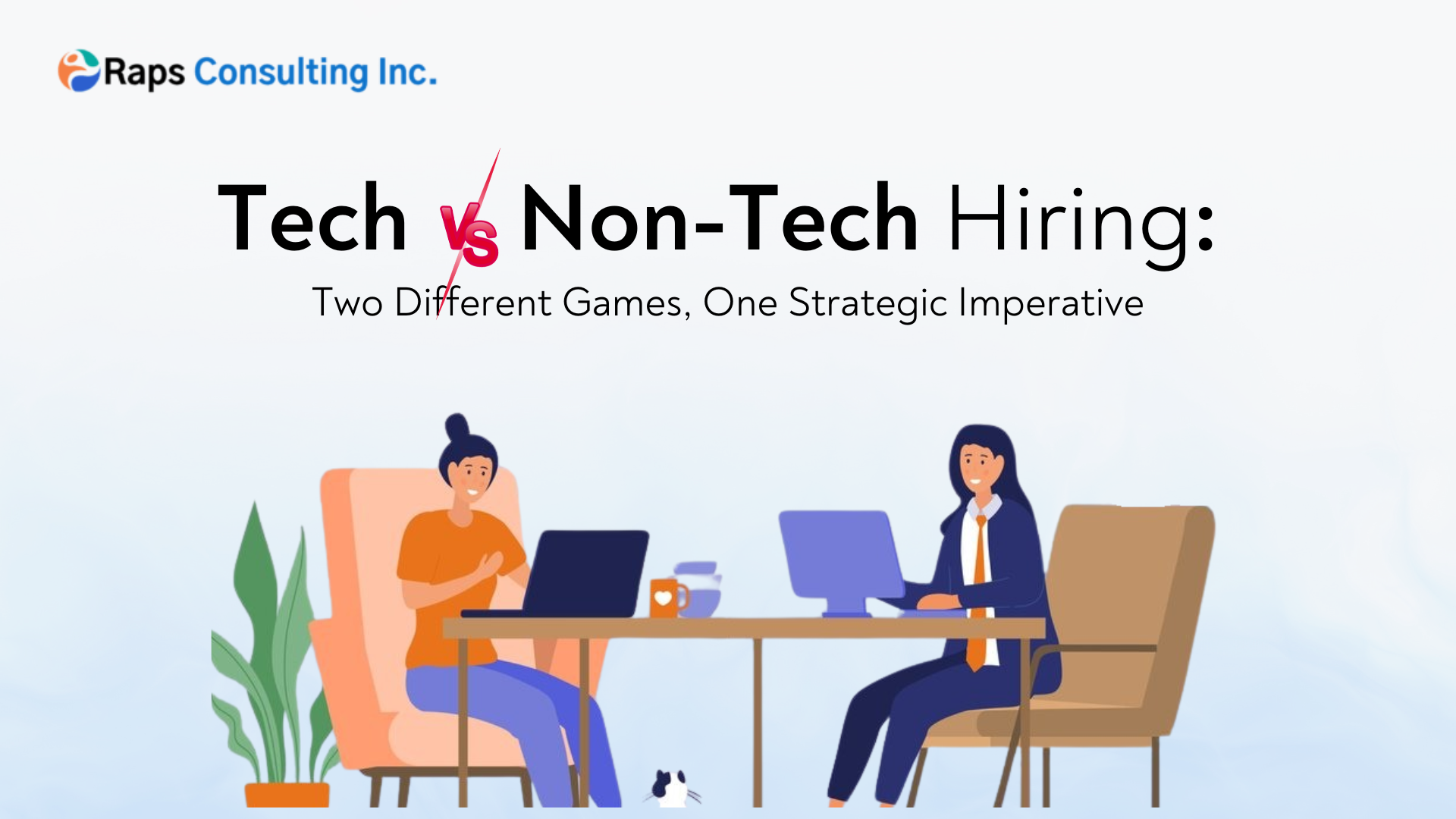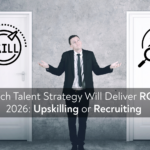In today’s hiring landscape, one-size-fits-all recruitment models are a liability. When it comes to Tech vs. Non-Tech Hiring, the mechanics of recruiting a DevOps engineer differ profoundly from hiring a logistics lead or clinical administrator—and yet, many organizations apply the same approach to both.
Tech vs. Non-Tech Hiring: Understanding the operational, behavioral, and market-based nuances between tech and non-tech hiring isn’t just helpful—it’s mission-critical for reducing time-to-hire, increasing retention, and building roles that scale with your business.
Let’s break down the structural differences—and explore why treating them the same costs more than just time.
Also, Read more here – How Non-IT Recruitment Differs from Tech Hiring—and Why It Matters?

The Market Signals: What the Data Actually Says
Tech Hiring: Deep Skills, Long Cycles
- 55% of tech roles remain open for over 90 days due to niche skill gaps and candidate scarcity (LinkedIn Workforce Report, 2024).
- 80% of IT executives cite hiring constraints as their top barrier to innovation and growth (CompTIA).
Non-Tech Hiring: High Volume, High Velocity
- Job opening rates in logistics, healthcare, and manufacturing hover around 7.5%, per the Bureau of Labor Statistics.
- These roles are often filled 25–40% faster than tech roles—but retention risks rise when soft skills or values alignment are overlooked.
Tech vs. Non-Tech Hiring: Structural Differences That Define Each Hiring Track
1. Skills Depth vs. Soft Skill Precision
- Tech hiring prioritizes tool proficiency, certifications, and deep domain expertise—often validated through technical screenings or code assessments.
- Non-tech roles require a different lens: adaptability, empathy, communication, and frontline decision-making. These are harder to quantify—but essential to success.
2. Talent Pool Shape & Search Strategy
- Finding a qualified cloud security architect? That’s precision outreach into passive markets.
- Filling an operations coordinator role? The challenge shifts from scarcity to signal—screening at scale, fast, and without compromising on fit.
3. Timelines & Offer Dynamics
- Tech hiring often spans 45–60 days, complicated by skill assessments and competitive counteroffers.
- Non-tech hiring requires speed as strategy—especially in high-churn sectors where the first offer often wins.
4. Candidate Motivations: Autonomy vs. Stability
- Tech candidates seek autonomy, flexible work environments, and fast-track career mobility.
- Non-tech candidates prioritize security, community culture, and consistent schedules. Misread these priorities, and you’ll lose them—fast.
Strategic Recommendations: Hire Smarter, Not Harder
Tech vs. Non-Tech Hiring: The solution isn’t just better sourcing. It’s about structural adaptation—understanding the distinct needs and dynamics of each hiring track and building a tailored strategy that addresses the unique challenges of both tech and non-tech roles.
- Segment Your Pipelines: Tech and non-tech roles deserve separate playbooks—different outreach, assessment, and success metrics.
- Deploy Purpose-Built Tools: Use AI-driven platforms tailored to each domain—whether that’s passive sourcing for developers or resume parsing at scale for non-tech roles.
- Customize Onboarding Metrics: Measure success differently. Code quality for engineers, retention and CSAT for customer-facing staff.
- Rebuild Interviews by Role Type: Technical simulations for developers. Behavioral analysis and scenario-based tests for non-tech candidates.
Why Strategic Partners Outperform In-House Teams
Tech vs. Non-Tech Hiring: When the stakes are high, generic RPO or in-house models often stall. The edge lies in partnering with experts who understand both ecosystems and can build scalable hiring architectures around each.
Tech vs. Non-Tech Hiring: Whether you’re scaling your engineering team or rethinking your frontline workforce, the right partner doesn’t just fill roles. They future-proof your hiring infrastructure.
Bottom Line: This Isn’t Just Recruitment—It’s Workforce Design
Tech vs. Non-Tech Hiring: Hiring a developer isn’t the same as hiring a nurse. Treat them the same, and you’ll lose both. But by acknowledging the structural differences in Tech vs. Non-Tech Hiring, you position your company to build not just teams, but high-performance ecosystems.
Need help rearchitecting your hiring strategy?
RAPS Consulting brings domain-specific expertise across both tech and non-tech verticals, making us a trusted partner in navigating the complexities of Tech vs. Non-Tech Hiring. From candidate sourcing to role calibration and onboarding design—we help you hire with intention, precision, and speed.
Let’s build a hiring model that works harder, scales faster, and aligns with how talent actually moves.
📩 DM us or visit rapscorp.com to start a conversation that changes how you hire.
FAQs
1. What’s the key difference between IT and non-IT hiring?
Ans. IT hiring focuses on technical skills and certifications; non-IT emphasizes soft skills, adaptability, and culture fit.
2. Why is non-tech hiring typically faster?
Ans. Larger talent pools and fewer screening stages speed up the process—but often at the cost of retention if not done right.
3. Is turnover higher in non-tech roles?
Ans. Yes. Non-tech roles see more churn due to poor culture fit or unclear growth paths.
4. How does RAPS streamline non-tech hiring?
Ans. By using tailored screening, behavioral assessments, and fast-turnaround sourcing—built for frontline and support roles.
5. How does RAPS tackle tech hiring differently?
Ans. We use deep technical vetting, targeted sourcing, and brand positioning to attract and retain niche talent faster.






Leave a Reply